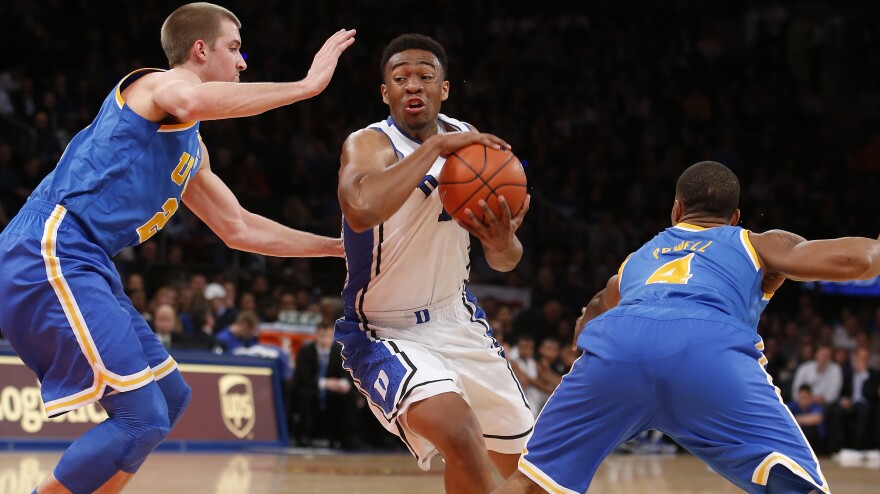College athletes astound us with their power and speed, but they can pay a price years later. Division I players are more likely to be disabled, depressed and in pain in middle age, a study finds. And they may end up worse off because they fail to make the switch from high-level competition to the low-level activity of the rest of us.
"A lot of athletes don't want to work out on a treadmill," says Janet Simon, a graduate student in public health at Indiana University who led the study. "Division I players are used to playing at such a high level. If they can't play at that level, they sometimes don't want to do anything."
Simon asked 457 Indiana alumni ages 40 to 65 about their health. Half had played varsity sports in college, including football, basketball and baseball. The other half were recreational athletes at best.
By the time they reached middle age, the former elite athletes were twice as likely to have health problems that limited their daily activity. Two-thirds of the athletes said they had suffered a major injury while playing. They also were more likely to have arthritis, with 40 percent of athletes being diagnosed, compared to 24 percent of the nonathletes.
Half of the athletes had chronic injuries, compared to 28 percent of non-athletes. And they were more likely to be in pain and depressed.
"If someone is unhappy with how they're working out, they made feel depressed, or they may have poorer quality of life," Simon told Shots.
Overall, the nonathletes who had been active in college had better health in middle age than the athletes. They also were healthier than people of the same age in the general population who were not involved in the study.
"We have a lot of resources for our athletes," Simon says. She's an athletic trainer herself, so she should know. "But most of them are geared toward making them the best athlete they can be when they're at the university. There's not a lot of talk about what you're going to do when you leave. Football is not a lifetime sport."
Obviously not all former athletes are having problems. But college athletes are starting to realize that their intense training and competition can make for health problems later. Student athletes at Northwestern University are pushing to unionize, and their demands include health care after college.
The study was published in the February American Journal of Sports Medicine.
This study has a number of limitations. It is skewed toward football players, who made up 40 percent of the athletes. And there are more men: 167 men compared with 65 women. And the results were self-reported.
Simon is now working on expanding the study to measure participants' present-day health in the laboratory, including what people are doing compared to what they wish they could. She'll also compare how athletes in different sports fared. "Football is such a different sport," she says.
She hopes that present-day Division I athletes will fare better, because training and sports medicine has improved in the past 40 years. "Maybe they won't be as limited."
Copyright 2021 NPR. To see more, visit https://www.npr.org. 9(MDIxMDkyNjUxMDE0NDY1Njg1NzRiOTRiYQ000))





